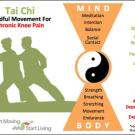Dealing with Patients’ Fear of Treatment
Enhancing Patients’ Treatment Adherence
One of the most common reasons cited for patients’ failure to take their medication is patients’ fear of side effects.1 Patients’ fears may be totally out of proportion to the true risk of drugs. The misperception of risk may be due to the human mind’s difficulty interpreting the probability of rare events: people play the lottery despite the near impossibility of winning, and they don’t take medication that will likely help them because of fear of rare side effects that are highly unlikely to affect them.
A number of approaches can be done to allay such fears. I frequently let patients know that the treatment that I am providing them is “all natural” and that it “complements the body’s natural healing mechanisms.” These statements are true about nearly all treatments we offer (we certainly aren’t offering “unnatural” or “supernatural” treatments) as terms like “natural” and “complements” are so fuzzy as to lack strict definition. Moreover, the medications we prescribe do bind to receptors and enzymes in the body, complementing those systems. Our treatments help put the body back in “balance.”
If a patient comes in wearing tie-dye or Birkenstocks, or if they tell me they recently moved to town from San Francisco or Portland, I am proactive in explaining the natural character of the treatments I provide. One such patient, with a severe inflammatory disease, needed a tumor necrosis factor (TNF) blocker. I explained that this biologic medication is “all natural,” consisting of the natural TNF-binding domain coupled to an all-natural normal human immunoglobulin protein domain; I also explained that by binding excessive levels of TNF, the treatment would bring the TNF level into balance and complement the natural healing mechanisms. Similarly, were a mother ask me if the medication I was prescribing to her child for eczema was a “steroid,” I might explain that it is an “all-natural topical anti-inflammatory designed to complement your child’s natural healing mechanisms,” which is true, as corticosteroids are found in nature and bind to steroid receptors which are part of our natural pathways of healing (I don’t actually address the question about whether or not it is a steroid, having learned from watching American Presidential debates to leave unwanted questions unanswered).
There are more conventional ways of addressing fears. We’ve already touched on one in a previous article in this series: by making sure patients realize we care for them, they will trust us and, therefore, trust the treatment we offer. Another way to deal with fears is to put the risks in perspective. This might be done graphically, showing them that heart attacks and cancers unrelated to the treatment are common, and that the rare risk of death from the treatment is on the order of shark bites and lightning strikes and perhaps less than the risk of death from driving to our office.
References
- Krueger KP, Berger BA, Felkey B. Medication adherence and persistence: a comprehensive review. Adv Ther. 2005 Jul-Aug;22(4):313-56.
Author Bio
Dr. Steven Feldman is a professor of dermatology and public health sciences at Wake Forest Baptist Medical Center in Winston-Salem, NC, where he studies patients’ adherence to treatment. He is also Chief Science Officer of Causa Reseach, an adherence solutions company (www.causaresearch.com), founder of www.DrScore.com and author of “Compartments” (www.compartmentsbook.com). Contact him at sfeldman@wakehealth.edu.




